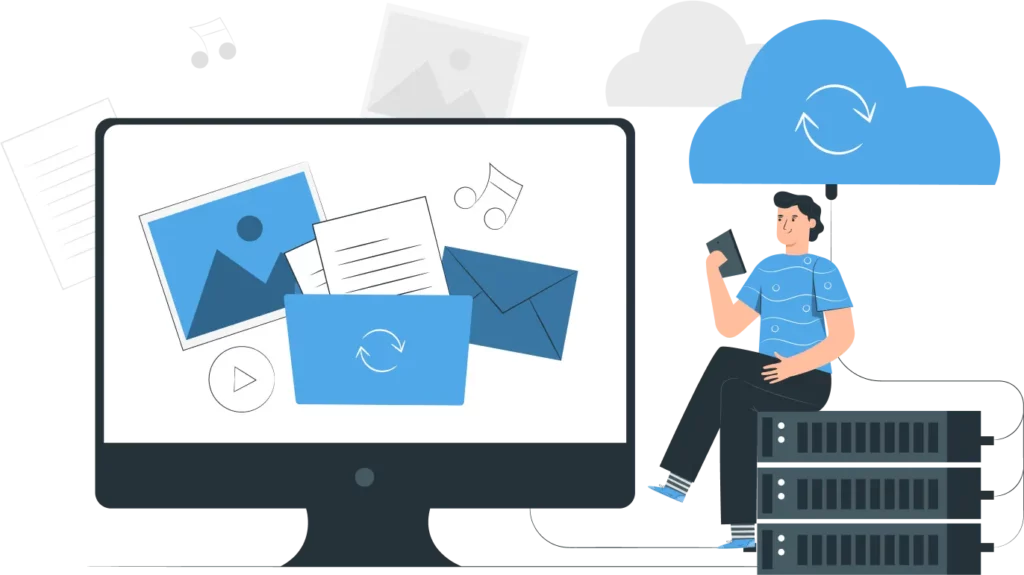Legacy contracts can be a headache for any organization. With changing business practices, technological advancements, and regulatory requirements, these contracts can become outdated and difficult to manage. However, migrating these contracts to a more efficient system can enhance productivity and streamline operations. In this blog post, we will dive into the world of legacy contracts – understanding what they are, their evolution over time, and the challenges they pose.
We will also explore the need for migrating these contracts and how contract lifecycle management software (CLM) plays an important role in the process. Additionally, we will provide key steps towards successful contract migration along with best practices to ensure a smooth transition. So if you’re ready to take your organization’s contract management strategy to the next level, read on!
Understanding Legacy Contracts

Legacy contracts, existing in various formats like paper or spreadsheets, often lack standardized metadata, hampering searchability. To migrate them, understanding their scope and complexity is crucial. NLP technology extracts key data points, ensuring accurate migration. Storing legacy contracts in a digital repository improves visibility and accessibility for team members. Embracing new contract lifecycle management systems and workspaces streamlines the process. By leveraging NLP and technology, the volume of legacy contracts can be effectively managed, giving law firms and businesses an organized, efficient solution.
The Evolution of Contracts
Contracts have come a long way in their evolution. The contracting process has become more streamlined and efficient, from handwritten agreements to digitized contracts created with AI-powered tools. Modern contracts incorporate best practices and predefined templates, making drafting and managing them easier. However, legacy contracts may pose challenges during migration due to outdated clauses or terms. By migrating to new contract administration features, businesses can take advantage of improved efficiency and reduced reliance on paper documents. This shift towards technology-driven contract management transforms how contracts are created, stored, and accessed.
The Challenges with Legacy Contracts
Legacy contracts pose several challenges in the modern business landscape. One of the main obstacles is the fragmented storage of these contracts in different locations and formats, which creates data silos and hinders effective collaboration among teams. Additionally, manual extraction of data from legacy contracts is not only time-consuming but also prone to errors. The absence of a centralized repository further complicates matters, making it difficult to retrieve and track contract data. Failure to migrate legacy contracts to a modern system can also result in compliance issues. Therefore, successful migration requires oversight from key stakeholders, including finance teams and legal advisors.
Related Article: How To Digitize Your Physical Contracts?
The Need to Migrate Legacy Contracts

Migrating legacy contracts to a contract management software offers numerous benefits for businesses. By centralizing contract data, organizations gain a single source of truth for contract information, eliminating the need to search through multiple locations or formats. This enhanced visibility reduces reliance on paper contracts, streamlining contract management processes. CLM software provides advanced features for contract analysis and renewal, improving efficiency and reducing risk. Additionally, extracted data from legacy contracts can be leveraged to identify trends and insights, empowering better decision-making.
Enhancing Efficiency through Migration
Streamlining contract administration processes to save time and effort is a key benefit of legacy contract migration. By migrating to a new CLM system, organizations can leverage automated workflows to manage the contract lifecycle more efficiently. This eliminates manual tasks, increasing productivity. Additionally, AI-powered contract management software can quickly identify critical data points in legacy contracts, enabling faster retrieval. Collaboration and communication between team members are also enhanced through migration, resulting in improved overall efficiency. Simplifying the migration of legacy contracts can significantly enhance operational effectiveness and drive business success.
The Role of CLM in Migration
CLM systems play a crucial role in the migration of legacy contracts. These systems provide a structured framework for organizing and managing contracts during the migration process. By using CLM software, businesses can ensure standardized contract fields and metadata, making it easier to search and retrieve contracts. Moreover, new CLM systems offer features such as contract templates and automated approval workflows, streamlining contract management. Migrating to a CLM system also facilitates efficient access and collaboration on contracts among business partners. Ultimately, centralizing contracts in a CLM system improves contract governance and compliance.
Key Steps in Legacy Contract Migration

To successfully migrate legacy contracts, it is important to follow a systematic approach. The initial step involves organizing and digitizing existing contracts, ensuring easy access and retrieval of information. Defining fields and elements for migration ensures consistent and accurate data transfer to the new system. Uploading and structuring contracts in the new system requires careful categorization and organization. Techniques like OCR can be utilized to convert paper contracts into digital format, facilitating easier management. Additionally, verifying and validating extracted data is crucial to ensure accuracy in the migration process.
Organizing and Digitizing Existing Contracts
To effectively migrate legacy contracts, it is essential to prioritize their organization based on contract type, expiration date, or other relevant criteria. Digitizing these contracts involves scanning paper documents and converting them into a digital format, such as PDF files or email attachments. Utilizing contract management software can create a searchable repository for these organized and digitized contracts. It is crucial to establish a systematic approach for naming and categorizing contract files to ensure easy retrieval. Additionally, implementing version control mechanisms helps track changes and updates during the migration process.
Defining Fields and Elements for Migration
Defining the fields and elements for migration is a crucial step in simplifying the legacy contract migration process. It involves identifying key data points, such as contract value, renewal dates, and stakeholders, that need to be migrated to the new system. Metadata fields should be defined to capture relevant information like contract type and contract administration details. Consistency in field definitions and naming conventions across all migrated contracts ensures seamless data transfer. Additionally, considering custom fields to capture unique organizational data points and defining rules and processes for mapping legacy contract data is essential.
Uploading and Structuring Contracts in New System
To migrate large volumes of contracts efficiently, utilize the bulk upload capabilities of a contract management tool. Structure the contracts in a way that aligns with the organization’s needs, using folders or categories. Enhance searchability by tagging contracts with relevant keywords, utilizing the new system’s features. Establish access controls and permissions to ensure appropriate visibility and security for migrated contracts. Conduct thorough testing and validation to ensure a seamless transition to the new system.
Related Article: How Blockchain Will Transform The Legal Industry
How to Prepare for Successful Contract Migration?

To ensure a successful contract migration, start by assessing and organizing your existing contracts and contract data. Categorize them based on their types and determine the desired structure and metadata for the new CLM system. Develop a migration plan, consider volume and complexity, and communicate effectively with stakeholders throughout the process.
Ensuring Accurate and Current Records
To ensure accurate and current records, it is essential to conduct a thorough review of existing contracts for accuracy and completeness. Any outdated or missing contract data points should be updated. It is also crucial to validate the contract value and other essential information, and verify the contract type and relevant clauses for each document. Collaboration with the legal team is necessary to ensure contract administration compliance. By following these steps, organizations can maintain accurate and up-to-date records of their legacy contracts.
The Importance of Data Deduplication
To ensure a clean and accurate contract repository in the new system, it is essential to utilize AI-powered tools for data deduplication. These tools can identify and remove duplicate contracts, eliminating redundant data points and streamlining the migration process. By doing so, you minimize the risk of conflicting information and confusion. Additionally, data deduplication enhances the visibility and searchability of contracts for team members, allowing for more efficient contract management. It is a crucial step in simplifying legacy contract migration and ensuring a smooth transition to a new contract lifecycle management workspace.
Best Practices for Smooth Contract Migration
Establishing a clear workflow and approval process for new contracts is essential to ensure a smooth contract migration. By utilizing templates and standardized contract terms, organizations can improve efficiency and reduce the time spent on contract creation. Leveraging automation and AI-enabled functionalities further accelerates the processing of contracts, enabling faster turnaround times. It is crucial to train users on the new CLM system and its features to maximize productivity. Regular reviews and audits should be implemented to maintain data integrity within the system.
Utilizing Structured Metadata Effectively
To effectively utilize structured metadata in contract management, it is crucial to define and implement a standardized metadata framework. This framework should capture relevant contract data points, including parties, dates, and obligations. By leveraging metadata, advanced search and reporting capabilities can be enabled, enhancing the overall analysis and reporting of contracts. To ensure accuracy and consistency, it is important to pay attention to entering metadata during contract upload. By embracing metadata, organizations can unlock valuable insights and make informed decisions when it comes to contract management and analysis.
Related Article: Best Contract Management Software In 2024: Top 10
Is Your Organization Ready for Contract Migration?
Assess your organization’s contract management processes, evaluate existing contracts’ volume and complexity, determine resource needs for a successful migration, consider the impact on stakeholders, and plan for ongoing post-migration management.
FAQs
What is legacy contract migration and why is it important?
Legacy contract migration is the process of transferring old contracts to a new system or format. Its importance lies in ensuring compliance with new regulations, improving efficiency, and reducing costs. Successful migration requires meticulous planning and execution.
What are some common challenges that arise during the contract migration process?
During the contract migration process, several common challenges may arise. These include incomplete or missing records, incompatible systems, and conflicting clauses in contracts. It is crucial to have a clear plan and strategy to address these challenges. Working with an experienced contract migration team can help ensure a successful migration.
How can technology be used to simplify the contract migration process?
Contract management software can automate migration, while OCR technology converts physical contracts into digital formats. AI tools analyze and categorize contracts based on content, and cloud-based storage solutions securely manage migrated contracts.
What are some benefits of successfully migrating legacy contracts to a centralized system?
Improved accessibility and visibility of contract data, streamlined contract management processes, reduced administrative burden, increased compliance and risk mitigation, and better negotiation leverage with suppliers and customers due to transparency.
Conclusion
In conclusion, the process of migrating legacy contracts can be complex, but it is essential for enhancing efficiency and streamlining contract management. By understanding the challenges associated with legacy contracts and the benefits of migration, organizations can make informed decisions. Key steps such as organizing and digitizing contracts, defining fields for migration, and uploading them into a new system are crucial for a successful migration. It is also important to ensure accurate and up-to-date records, as well as perform data deduplication to avoid any redundancies. By following best practices and utilizing structured metadata effectively, organizations can simplify the process and achieve a smooth contract migration. Is your organization ready to embrace the benefits of modern contract management?





